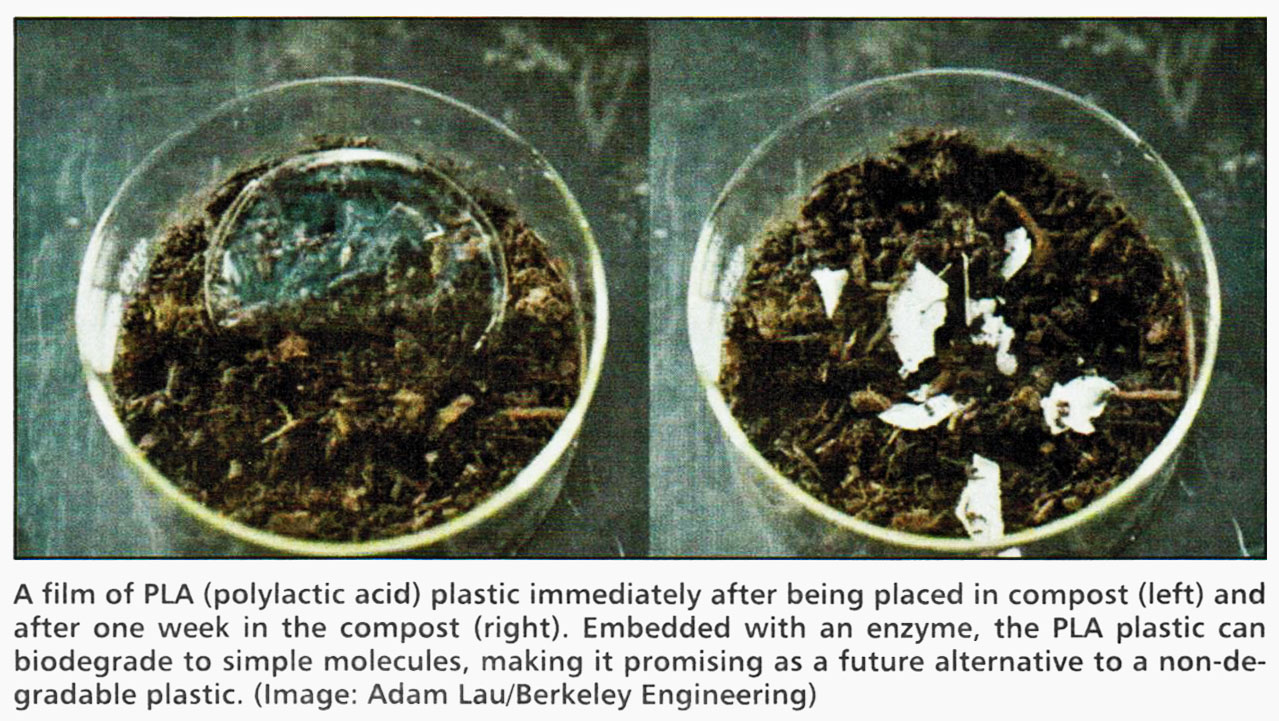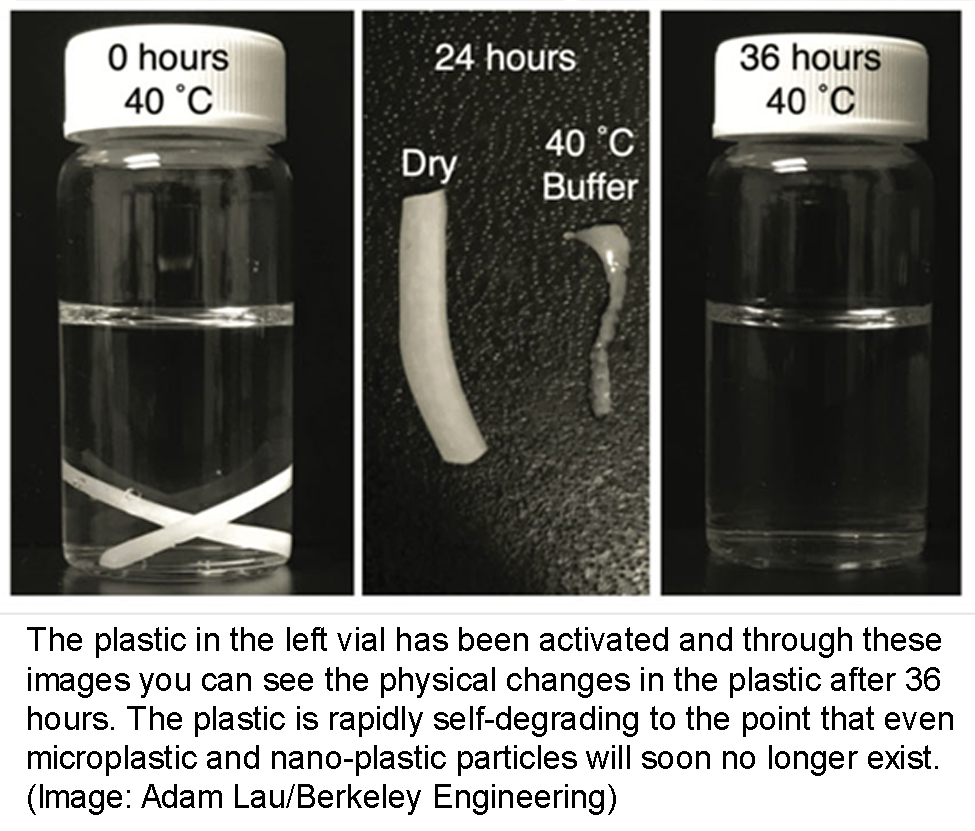

Self-Destructing Plastics
A 2021 Award Winning Recycling Solution
December 2022
A fantastic number of items that were once made from glass, metal, wood, plant fibers, animal hair and animal bone are now being made out of plastics. The creation of synthetic plastics started in the early 1900s. In the years that followed chemists and engineers created many new plastics with properties that matched the look, strength and other characteristics of each material listed above.
Our Plastics Problem
A recent article in the Smithsonian Magazine indicates that the US was only able to recycle just 5 to 6 percent of the 40 million tons of plastic waste that its citizens generated in 2021. So much of the plastics that don’t get recycled end up in the oceans of the world and over time they do break down into micro-sized grains that are consumed by marine life.
For over 20 years scientists have warned that these microplastic particles could be dangerous. Most past studies focused on the dangers of microplastics to marine life. New studies are now underway to determine the dangers of microplastic and even small nano-plastic particles to animal life. Properly removing and fully recycling plastic right down to the nano-sized particles might soon be possible.
A Contest to Stimulate Innovation
NASA Tech Briefs Magazine launched a yearly Create the Future Design Contest in 2002. The stated goal of these contests is to “stimulate and reward engineering innovation” in multiple areas of technology. This column is going to describe the amazing technology that the 2021 grand prize-winning team created and entered into the Sustainable Technologies/Future Energy category of the contest. The team of researchers from the University at California, Berkeley campus actually developed enzymes that can make plastics fully degradable. See photos 1 and 2. The enzymes that they created are
designed to be embedded into new plastics during the manufacturing process. When these plastics are ready to be recycled, the self-destruct enzymes can be activated. Once


